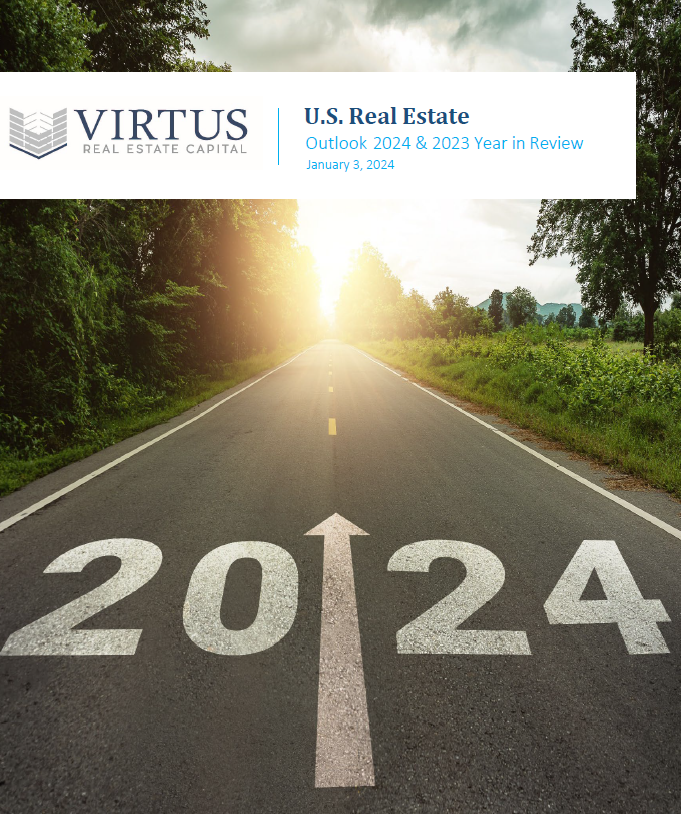Cycle-resilient property segments performed better during the Global Financial Crisis, and in our current COVID reality, they are doing so again.

This is a four-part series. To start at the beginning, click here.
Cycle-resilient property segments performed better during the Global Financial Crisis, and in our current COVID reality, they are doing so again.
Yet, despite their outperformance, due to the unique nature of these asset types, there is always distress on the fringes. In a post-COVID world, that distress will only become more widespread. In this four part series, we’ll examine this unprecedented opportunity in “resilient distressed” segments.
In the fourth and final part of this series, we’ll look at distressed opportunities by property segment.
Distressed Opportunities by Property Segment
The opportunity in each property segment will vary by what causes the distress and the ownership type. Although several other distressed scenarios are accessible in our targeted property segments, the main opportunities are as follows:
Student Housing distress is bifurcated. There are a number of lower quality and/or higher cost universities that will not survive the aftermath of the pandemic, or they will have to reinvent themselves with more online offerings. These markets will likely be distressed for the foreseeable future because demand will be significantly reduced. Contrast that with universities that offer students and their parents a compelling return on investment. The Ivy Leagues, semi-ivies, tier 1 public flagship universities, and lower cost tier 2 public universities will continue to see increased demand. If we go into a recession, it is likely that enrollment expands further as it has done over the last six recessions. Typically, the play here is in high enrollment growth universities that got hit with too much new supply in too short of a period. The supply will eventually get absorbed, but developers and other owners are going to struggle in the meantime. Our student housing team began planting seeds for these opportunities shortly after exiting the student housing space a few years ago. Harvesting season may be around the corner.
Senior Living was already reeling from new supply and labor challenges heading into the crisis. Although both of those challenges will likely be abated post-crisis, the senior living industry is unable to rent new units as they are locked down during quarantine. Some developers or those who were struggling to lease up value-add assets and even previously stabilized assets heading into quarantine will have trouble pulling out, despite long-term demand and high need for the property segment. One must be especially careful given the operational challenges of this space, so we will be particularly patient here and set the bar high. Short-term pain, long-term gain.
Self-Storage was oversupplied in certain markets, but historically most of our distressed opportunities have come from mom and pop owners. They often struggle to compete with the REITs’ digital marketing capabilities, and their operations are rarely institutional. If you add oversupply to the mix, and a lack of resources to defend the asset during troubled times, there will likely be opportunity similar to what we seized upon in our last self-storage fund in 2011.
Medical Office Building acquisitions will originate from two sources. First, the healthcare systems are bleeding cash because they have been prevented from delivering their “non-essential” yet high margin services. At the same time, they have been focused on treating COVID or dealing with acute cases in the ER, both of which are typically unprofitable. We are already in discussions with health systems and related that will need to monetize assets to deal with their liquidity needs. The second source will be the office owners who tried their hand at MOB ownership, and likely used a debt fund to finance a value-add play. If they do not lease-up, or if fringe healthcare tenants do not make it, these may present buying opportunities.
Workforce Housing will likely not experience much operational or new supply distress because there is almost no new supply. Yet tenant demand will remain and likely even grow from the luxury renters who may be forced to come down to the more affordable midmarket rentals, or the fact that accessing a mortgage to purchase a home (the number one reason why tenants vacate a workforce housing property) may no longer be a reality for many of these tenants. There may be capital structure distress, but likely most of the opportunity will be from a reduction in cost basis or being able to invest more capital in a preferred equity position with liquidation and cash flow preferences to mitigate downside.
Educational assets such as charter schools and early-ed are almost all shutdown. Although demand will return very quickly once we are past quarantine (it may be volatile if we have periods of rolling suppression), this temporary but very abrupt reduction in revenue will likely topple some of the school operator tenants. This may create an opportunity to pick up good assets on the cheap and bring in a more effective operator tenant for this long-term resilient segment.
There will be plenty of other categories of distress, but in the interest of brevity, we have focused on the most obvious ones herein. The common thread you will find is that these are lower risk plays than traditional CRE distress, yet with the same potential for higher octane returns. For these reasons and others, we are quite excited about the buying opportunity to come, the likes of which we have not seen in many years.










